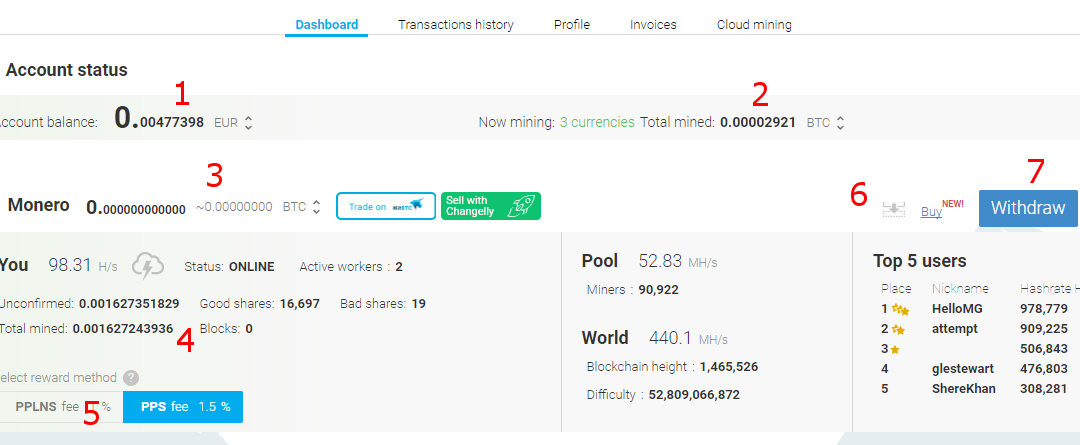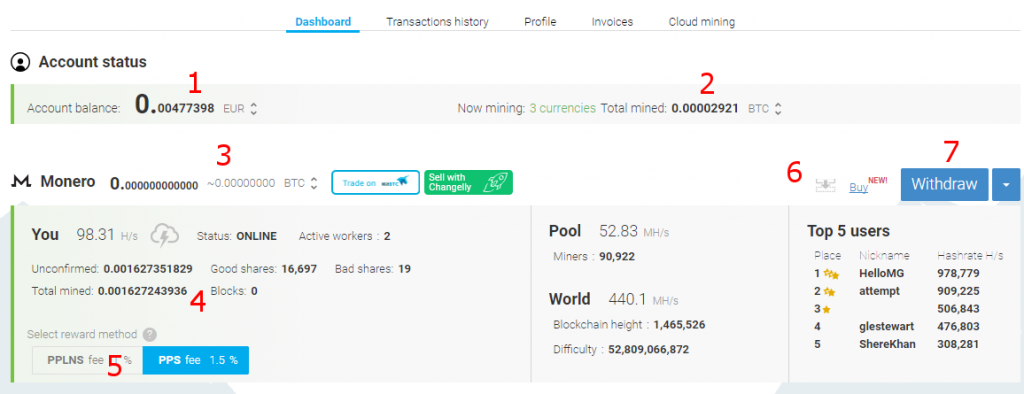Masternode and ZenCash SecureNode SuperNode Setup Service (Outdated)
Masternode and ZenCash SecureNode SuperNode Setup Service (Outdated)
Outdated Article
I no longer consider Masternodes to be a good investment. Most of them are scams or the return is just too small. So unless you want the governance involved with a masternode project, I’d stay away from them altogether. I no longer host any masternodes except for Horizen Supernodes and Securenodes for a very select clientele. For the most part, if you want to host a masternode, you should use an automated service like Allnodes. The information on this page is kept just as legacy information.
The average person looking for returns is FAR better off using Defi or simply staking their coins than using masternodes. I am currently working on a Defi introduction and tutorial and will update this page once that is done.
Masternodes 2018-2020…Legacy information (Outdated)
0
Masternodes are incredibly popular right now. There has been an explosion in the number of masternode projects, and a kind of nuclear arms race to attract new buyers with high ROI. Many of the new coins start out with 1000% ROI or higher. This means that you could get your initial investment back within 2 months (if the price holds).
But setting up a masternode often requires a bit of Linux know how. The most popular set up is called a “cold wallet” where the coins that are kept as collateral live in your desktop wallet (preferably encrypted). Then a Linux Virtual Private Server (VPS) is set up that connects to the collateral and provide 24/7 masternode status regardless of whether your local wallet is open or connected to the internet.
Most of the masternode coins provide instructions on how to set up your Linux VPS. If you’re reasonably good at following directions, AND the guide is set up well, then it’s not too hard to figure it out yourself. However, many of the newer coins have incredibly bad guides.
- They skip steps.
- There are spaces where there shouldn’t be, and no spaces where there should be.
- Commands that belong on one line are split, and commands that should be two separate commands are joined together.
- Sometimes commands are missing altogether.
Some of the projects have nifty install scripts, so all you have to do is download an install file and run it. Qbic is an example of this, however, the script doesn’t fully work, and will leave you with a broken installation.
That’s where I come in. I’ve installed more than 30 masternodes from more than a dozen different coins. My first client had been trying to set up his Goa masternode unsuccsesfully for 6 days. He was losing $225 a day!!!
Here are the services I provide:
In addition to setting up the Masternode VPS, I also walk you through the process of setting up your local wallet and troubleshooting any issues that come up.
All prices are quoted in USD and payable in LTC, ETH, or BTC at the current market rate.
Masternode (setup only)
- You supply the VPS
- Cost is $75 per coin
- Discount of $25 per coin if ordering multiple at the same time.
- One week of troubleshooting is included.
- I will show you how to maintain the VPS and update the server.
Masternode hosting (setup and 1 year of hosting)
- Setup costs are the same as above (same as above)
- One year of VPS hosting and server updates is $140
- Note, if you host multiple coins with me, you may be able to host 3-4 coins on the same VPS. The fee to host an additional coin on the same VPS is $60.
- Subscriptions are renewable
Discount example 1: Masternode hosting for 2 coins on the same VPS
- Setup costs $50 x 2 = 100
- Hosting cost $140 + $60 = 200
Discount example 2: Masternode hosting for 3 coins on the same VPS
- Setup costs $50 x 3 = 150
- Hosting cost $140 + $60 + 60 = 260
HoriZen (formerly ZenCash) Super/Secure Nodes
Horizen (formerly ZenCash) is my favorite masternode type project. It is an incentive-driven application platform with optional zk-SNARK based privacy features that aims to provide everyone with complete control of their digital footprint. Launched in May 2017 (no ICO and no pre-mine), the platform is said to enable real-life use cases beyond the ZEN currency, including the ability to privately chat with others, publish information and go anywhere on the web with complete privacy.
As of Fall 2019, the team is reportedly working towards releasing the Horizen SDK which would allow developers and enterprises to build what they call “an unbounded set of applications, products and services on top of the Horizen technology platform which is a truly decentralized side-chain based system powered by Horizen’s globally distributed multi-tier node network.”
Horizen Secureand Supernodes Nodes are quite a bit more involved than Masternodes both in set up and VPS requirements.
- If you supply the VPS
- Cost is $100 per Secure Node
- One week of troubleshooting is included.
- I will show you how to maintain the VPS and update the server.
HoriZen Secure Node hosting (setup and 1 year of hosting)
- SuperNode: One year of VPS hosting and server updates is $232
- SecureNode: Due to automation and economies of scale, I can offer Secure Node hosting including set up and maintenance for $60 per node. (Yes I know this is less than set up only. It’s a shook up crazy world.
- Super/Secure Nodes cannot share a VPS with another coin.
- Subscriptions are renewable
Frequently asked questions
What servers do you use?
I generally use OVH.com servers. Their VPS SSD 1 for masternodes and VPS SSD2 for secure nodes. I use Contabo for Super Nodes.
Will my coins be safe?
The coins will always remain in your local wallet. HOWEVER, I recommend that
- As soon as you receive the coins that you make a back up of your wallet.
- Store the back up in a safe place (from theft, fire, and water)
- Encrypt your wallet and DON’T lose the password.
It’s far more likely that you lose your coins due to negligence or your computer crashing than to being hacked. Please, for the love of God, back up your wallet and don’t lose the password.
How long have you been doing this?
I set up my first mastenode coin for myself and on December 28, 2017 and set up my first client a few days later. I have been using Linux since 2003. I have been running Linux VPSes since 2011.
What happens if you decide to quit this business?
If I decide to stop providing this service,
- All hosted clients will receive their full year’s subscription.
- OVH allows transfer of a VPS to another account. A month before the expiration, I will help migrate all client VPS to their own accounts.
How do we get started?
If you haven’t filled out the sign up form yet, that’s a great place to start Once we’ve talked/chatted and both agree to the work to be done, then I’ll need
- Your payment and the txID (so I credit the right person)
- Your masternodeprivkey (In your local wallet, go to Debug Console and type “masternode genkey”
- If you’re providing the VPS, I’ll need the IP address and root password.
What's involved on my (the client's) end?
You’ll need to
- Buy the coins
- Transfer them to your local wallet.
- Create a new address and send the EXACT amount of collateral to the wallet.
- Wait for at least one confirmation
- Go to the Debug console in the wallet.
- Type “masternode genkey”
- Type “masternode outputs”
- Copy all of the codes generated and save them in a text file.
- I will walk you though what to do with them.
What's the difference between a Zencash Securenode and a Masternode?
Masternodes mostly speed up network transactions and sometimes vote on the direction of the project. Secure nodes receive daily challenges where they receive and send a shielded (private) transaction each day. This provides the network with thousands of private transactions making it much harder to track. A secure node needs needs more memory than the typical masternode needs in order to run the challenges. There is also a performance aspect to secure nodes and super nodes, in that the node must complete the challenge under a time limit.
Secure nodes and Super Nodes are also paid differently than a masternode. Masternodes are paid (usually) from a lottery system based on a list of all masternodes running at a given time. Once a masternode has received its rewards, it goes to the bottom of the list. Horizen nodes are based on daily uptime. A nodes that is up for ~93% of the day is paid for that day. Payments are manually reviewed and paid out once a week.
Additional Horizen Resources:
Horizen Website – https://horizen.global
Horizen Academy – https://academy.horizen.global/
Horizen Discord – https://discord.gg/SuaMBTb
Horizen Blog – https://blog.horizen.global
Horizen Github – https://github.com/ZencashOfficial
Horizen Forum – https://forum.horizen.global/
Horizen Twitter – https://twitter.com/horizenglobal
Horizen Telegram –https://t.me/horizencommunity
Horizen on Bitcointalk – https://bitcointalk.org/index.php?topic=2047435.0
Horizen YouTube Channel – https://www.youtube.com/c/Horizen/
Horizen Facebook Page – https://www.facebook.com/horizenglobal/
What is the best way to get in touch with you?
Telegram and Discord are probably the best ways to get in touch with me. My username on Telegram is @patrokov. I have a Discord Server for the Masternode Service. My username is patrokov#7056. If you can’t start a DM with me in Discord, it’s most likely because we are not on the same servers. I can also Skype (same username) but Skype doesn’t alert me when I get a message, so it’s better to use a different method unless we pre-arrange a meeting or chat. E-mail also works. You can fill out the form below, and I will get in touch with you.
When do you do this work?
I mostly do the work in the evenings after work and on weekends.



Recent Comments